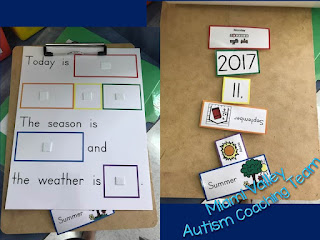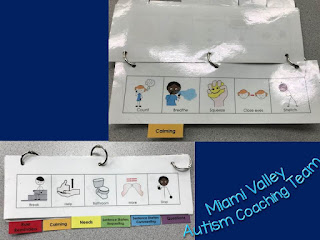This calendar display incorporates 3D shapes, place value, tens frams, time, number writing/sequencing, tallies, and graphing. What a great way to get daily practice of all of these skills in a busy 1st grade classroom!
 |
| Megan Kelly Beavertown Elementary, Kettering |
We love all of the skills covered on this calendar display including dates, days of the week, months, graphing, communication skills of answering questions and greetings, seasons and weather, and attendance. What a great interactive display!
 |
| Sara Moore Warder Park Wayne, Springfield |
This display is one of our favorites because it is on a portable divider which can be moved or turned around so that the visuals are not distracting throughout the day.
 |
| Ramel Mitchell Kyle Elementary, Troy |
We love how this calendar practices patterns using buildings.
 |
| Brittany Sword Valley Elementary, Beavercreek |
For older students, we love these age-appropriate displays.
 |
| Carrie Prickett Jane Chance Elementary, Miamisburg |
 |
| Robbie Whorton Trotwood Madison High School, Trotwood |
Sometimes, students struggle to remain on task during Circle Time. They may need visual supports to take turns or for following along.
This interactive Morning Message is a great way to practice close reading and writing while priming students on the date, learning theme, group activity, and lunch for the day.
This student has an independent task of recording the weather and temperature for each day of the school week. This is a great independent living skill to practice.
 |
| Tabitha Eaton Main Elementary, Beavercreek |
 |
| Amy Beanblossom Arcanum-Butler Elementary, Arcanum |
 |
| Anne Rosenbaum Orchard Park Elementary, Kettering |
We love these interactive boards for choosing exercises and songs during Circle Time.
 |
| Brittany Bush Spinning Hills Middle School, Mad River Local Schools |
This interactive Morning Message is a great way to practice close reading and writing while priming students on the date, learning theme, group activity, and lunch for the day.
 |
| Taylor Ruef Stevenson Elementary, Mad River Local Schools |
This student has an independent task of recording the weather and temperature for each day of the school week. This is a great independent living skill to practice.
 |
| Jennifer Jette Vandalia-Butler High School, Vandalia |











































